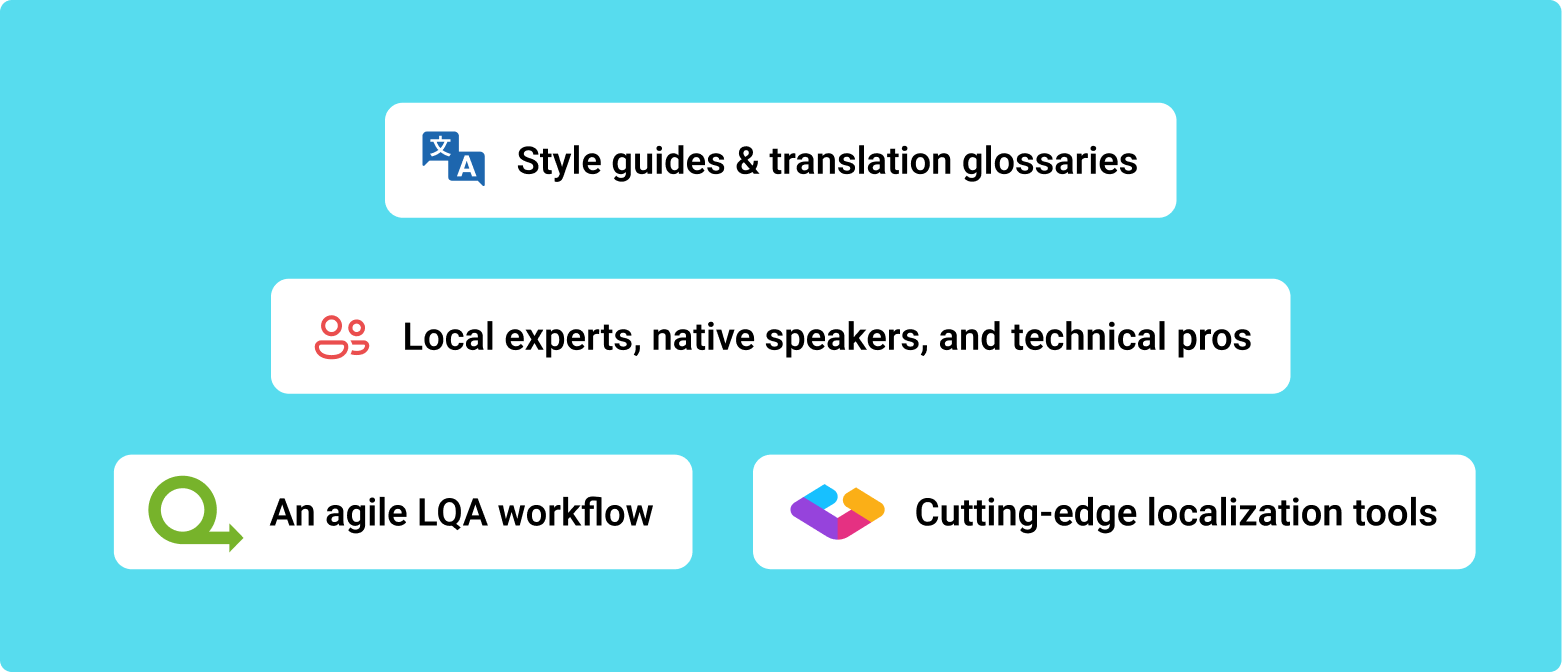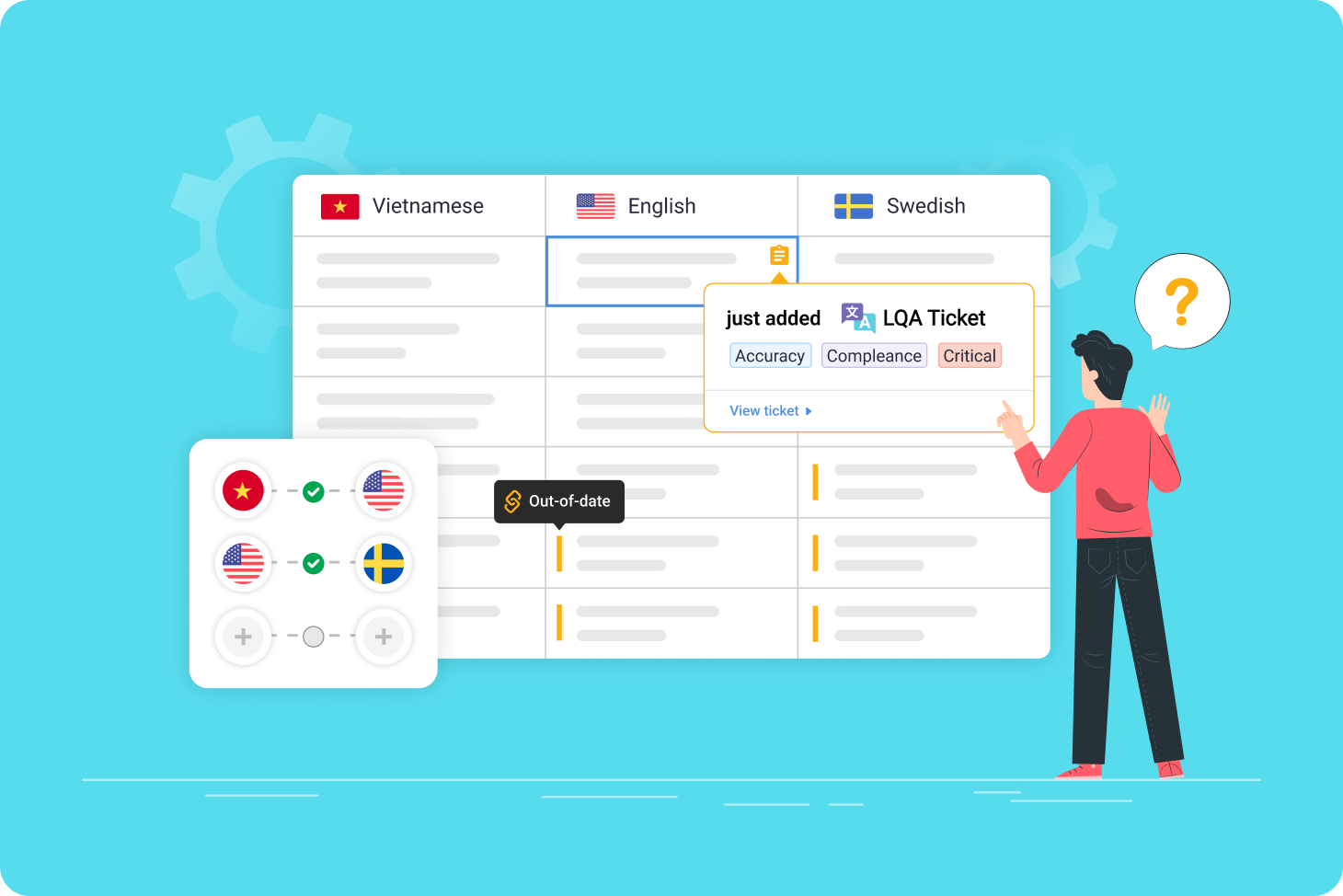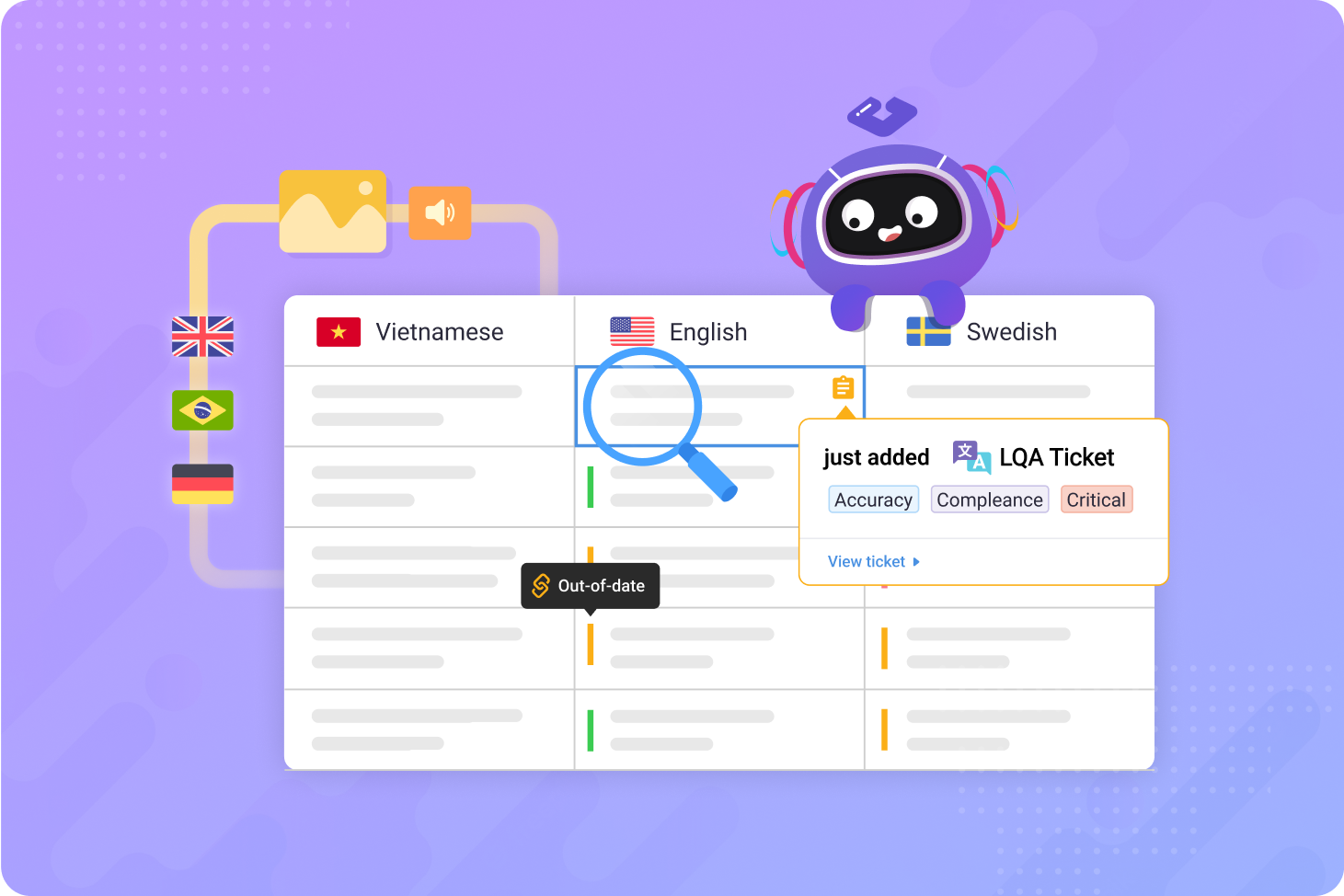What is localization quality assurance (LQA)?
Localization QA, otherwise known as localization testing, is a technique designed to check whether localized content is suitable for its intended audience. When performing LQA, testers evaluate content along the following criteria:
- Linguistic: Does the localized content contain any typos, grammatical mistakes, mistranslations, or other similar errors? Have idioms and figures of speech been correctly interpreted? Does the localized content meet project guidelines? Are the translations internally consistent? Is there still any untranslated content?
- Visual: Does the localized content fit within the design parameters of the UI? Are there any formatting or display issues? Are dates and times formatted appropriately? Have all images, videos, and other visual media been localized?
- Functional: Does the user experience meet the expectations of users in the target market? Do the features meet the needs of the intended users? Are all clickable links set to the correct destinations?
- Cultural and legal: Does the content and functionality of the localized app or website satisfy all legal regulations in its target market? Does it breach any cultural taboos? Are any cultural references in the content appropriate for the intended audience?
What’s the difference between localization QA and proofreading?
Localization testers perform their work in the context of your content, assessing for translation accuracy as well as cultural, visual, and functional issues. Meanwhile, proofreaders usually check text out of context — and in most cases, only for accuracy and grammar.
By assessing your content as end users will experience it, and from the perspective of someone in your target market, localization testers can more easily empathize with your audience. This is how localization QA can identify issues beyond whether or not your content was translated correctly.
Why is localization testing important?
Localization testing is important because it ensures that your app, game, or website will be as attractive as possible for your target audience. The purpose of localization is to create an organic connection with people in each market you serve, and LQA helps you get everything right before you launch.
The main difference between localization and translation is that localization is a culturally holistic process that goes beyond language to include all aspects of the user experience. By giving people content created specifically for them, localization forges an authentic relationship between your brand and your global audience.
That’s why LQA is about a whole lot more than simply checking your translated content — it’s about making your brand a natural choice for your customers. And it’s why choosing a CMS built for localization is so crucial.
What are the key elements to a good localization QA process?
Quality assurance is an essential component of any strong localization process. Though LQA is often seen as the final step before launching content, the most optimal localization strategies include LQA throughout the entire localization pipeline.
Incorporate the following tools and techniques to integrate LQA into your localization workflow, streamline the LQA process, and get better results.
Style guides & translation glossaries
A style guide is an instructional document that tells writers how your brand communicates and to whom. Style guides often include grammar rules, spelling and formatting choices, tone and voice guidelines, buyer personas, and other content to keep writers on-brand from the start.
A localization glossary is a database of key terms for your project. It contains important words or phrases in your source language(s) along with their intended translations in your target languages. With key terms translated in advance, localization writers can generate content that’s both more accurate and more consistent from the start.
Style guides and translation glossaries both boost LQA by reducing the amount of corrections required later in the testing process.

Local experts, native speakers, and technical pros
Localization testers must be experts on multiple fronts. Firstly, testers need native or near-native proficiency in both the target and source languages. Even though testers are only checking the localized content, they’re also responsible for ensuring the source content was localized correctly.
Secondly, testers need to be intimately familiar with the target market. Ideally, your testers will be living in those markets or will have spent significant time there. Otherwise, they may not have the cultural background needed to place themselves in the shoes of your potential audience.
Lastly, you’ll want testers with experience in your field. They’ll need to navigate your product firsthand to ensure a smooth and bug-free user experience, then communicate any issues to your localization and development teams.
An agile LQA workflow
An agile development process is an efficient one, and that includes LQA. Saving LQA for the very end means that everyone else is sitting and waiting while testers perform their work. And once the QA team finds issues — which they will — it’ll take even more time for everything to be fixed.
Instead, test as you build and localize. This enables testers to feed into the development process by reporting issues as they arise, enabling localization writers and developers to include their feedback into their respective workflows.
>> For comprehensive guidance on implementing these strategies, follow proven localization QA best practices that ensure project success.
Cutting-edge localization tools
Choose CAT tools and a CMS that give you the functionality you need to streamline your LQA process. Modern localization QA tools can significantly reduce testing time while improving accuracy. Many CAT tools automatically detect mistranslations so localization writers can correct their own errors before testers get involved.
Meanwhile, hosting your content in a CMS designed for localization can further boost your results.
Look for the following LQA-enhancing features in your CMS:
- LQA model support: LQA models define the error categories that testers can choose when filing issues. These may include mistranslations, cultural clashes, or display errors. Pick a tool that supports a range of models to give your teams maximum flexibility.
- CAT tool integration: When your CMS connects seamlessly to popular CAT tools like Phrase TMS or memoQ, it eliminates the need to manually import and export content between platforms. Translators and testers alike can work on content wherever they’re most comfortable, then confidently push it to your CMS.
- Multimedia support: When checking images and videos, testers often must access the content in a shared folder, then check it against the text strings stored in the CMS. Eliminate the back-and-forth with a CMS that can store multimedia files along with the text they contain. That way, testers have everything they need in one place.
>> Learn how Rovio 4x their LQA speed
Manage your LQA process with Gridly
Gridly is a localization-focused CMS that’s the perfect cornerstone for your LQA process. Its familiar spreadsheet interface is easy to navigate and ensures testers can easily locate the content they’re responsible for checking. Meanwhile, integrations with CAT tools as well as Unity and Unreal allow everyone to push content between their preferred workspaces.
Native support for a range of LQA models and easy ticket creation lets your team build a testing process that works best for your needs. And with all your content in one place, testers won’t waste time jumping back and forth between your content and file storage.
Try Gridly free for 14 days or schedule a demo to see it in action.




